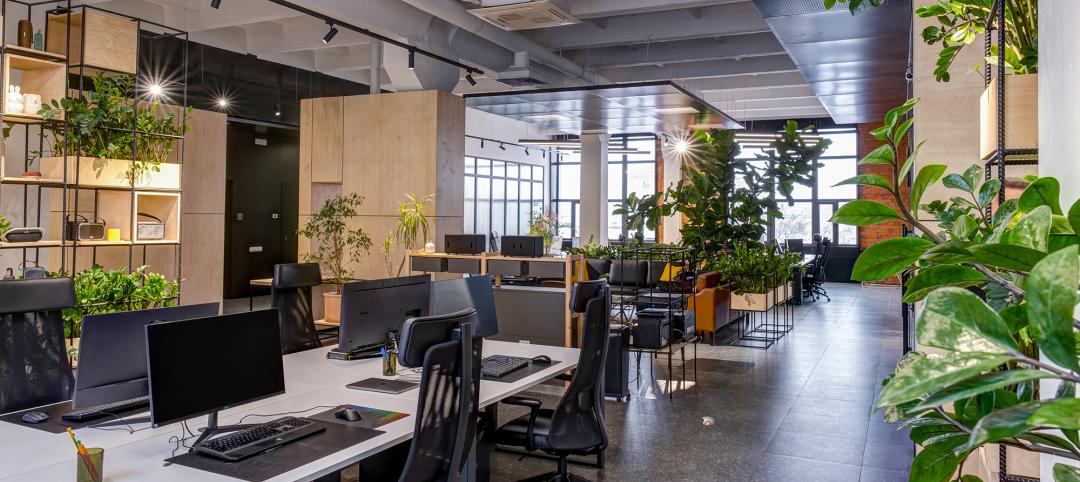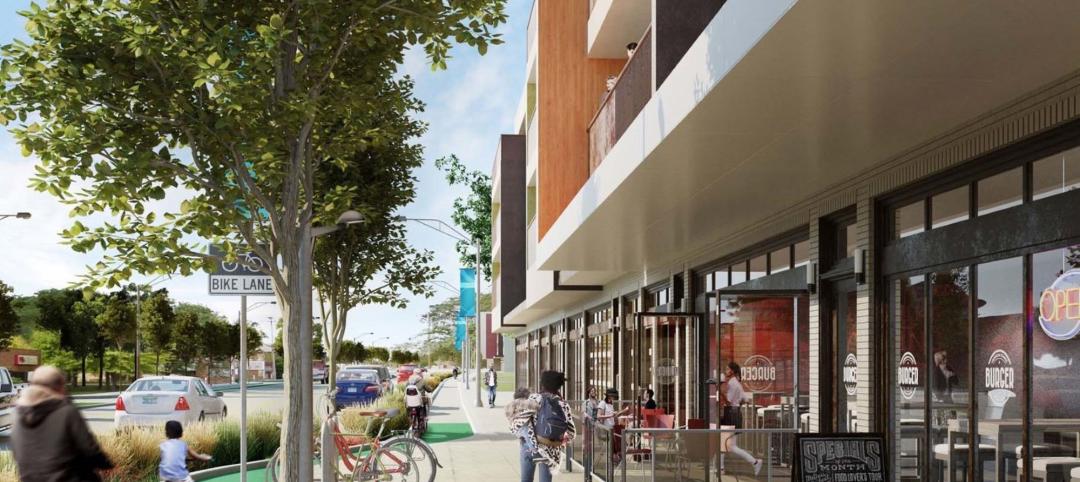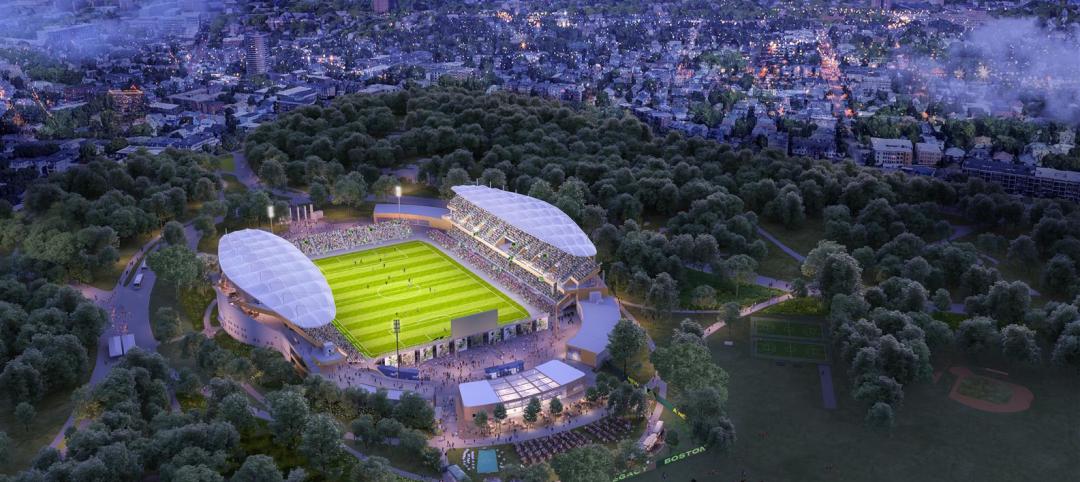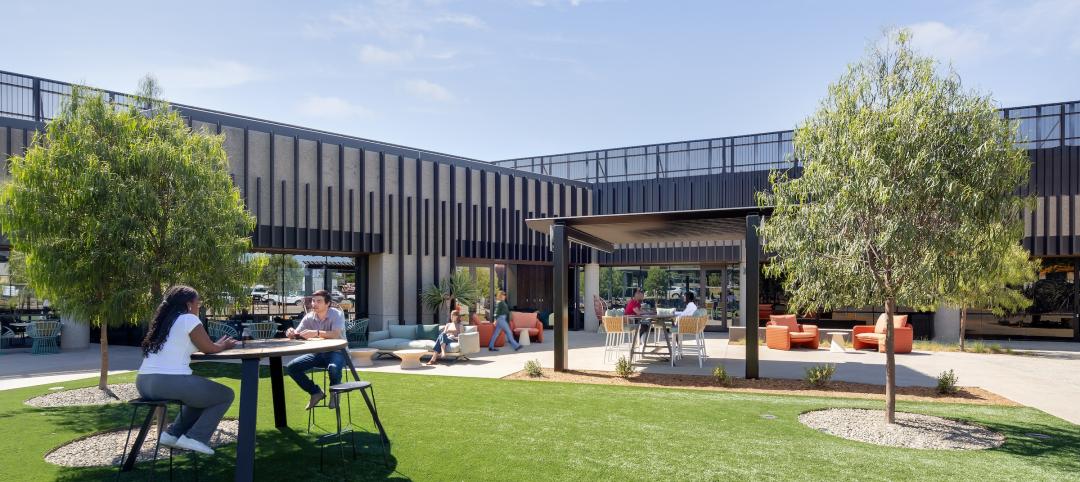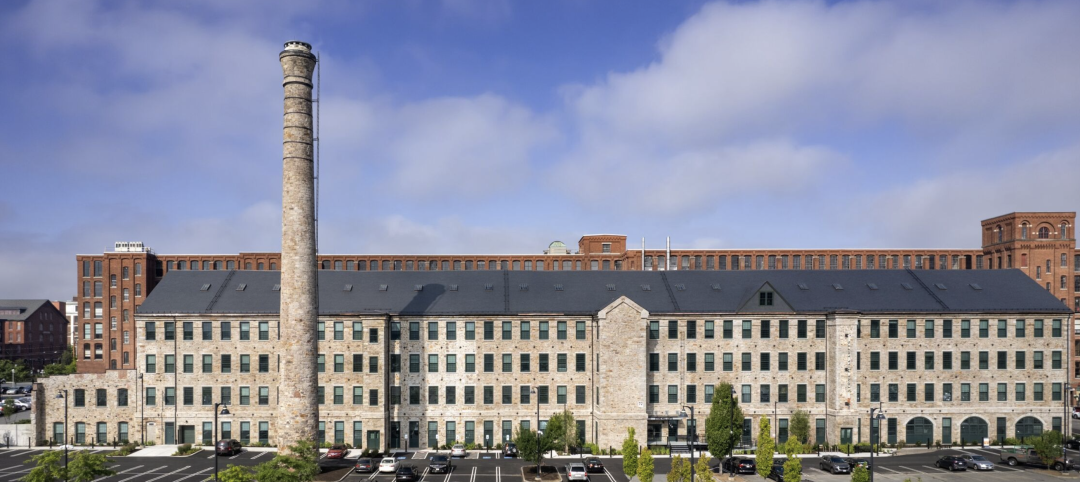At Beyer Blinder Belle Architects & Planners, RED stands for Research (into innovative materials, processes, and methodologies), Exchange (of ideas via dialogue, inquiry, and creativity), and Develop (ideas and applications that align with BBB’s practice and culture).
The firmwide initiative has hosted guest speakers, created exhibit areas in its two offices (New York and Washington, D.C.), and launched an internal digital dialogue tool organized by channel (materials, processes, etc.) for sharing ideas and resources.
What really hit a hot button with staff was this spring’s Research Award competition. Teams from New York and D.C. submitted 10 proposals, each designed to support innovative ideas that could positively disrupt BBB’s practice. A blind jury of BBB and outside design professionals picked two winners to receive three-month research grants.
Natalya Shimanovskaya, LEED AP BD+C, and Associate Lissette Méndez-Boyer, both of the New York office, won for “FABRICation—Flexible Adaptable Block, a Responsive and Intelligent Construction.” They will explore fabric through knitting and crocheting, while conducting a parallel study of design through parametric application. The end result will be expressed in a physical installation.
A team of three D.C.-office BBBers—Associates Scott Archer, LEED AP ND, Associate; Caroline VanAcker, Assoc. AIA; and Elizabeth Ellington, AICP, LEED AP, Associate—and Architectural/Urban Designer Michael O’Neill of the New York office hit it big with “DDD”: Data Driven (Urban) Design. They’ll be looking into the firm’s extensive database of New York City and Washington, D.C., waterfronts and engaging GIS mapping tools to generate data-rich urban design models.
The RED teams will present their findings to the entire 195-person firm this fall.
Read about more innovations from BD+C's 2016 Great Solutions Report
Related Stories
Urban Planning | Oct 30, 2024
Bridging the gap: How early architect involvement can revolutionize a city’s capital improvement plans
Capital Improvement Plans (CIPs) typically span three to five years and outline future city projects and their costs. While they set the stage, the design and construction of these projects often extend beyond the CIP window, leading to a disconnect between the initial budget and evolving project scope. This can result in financial shortfalls, forcing cities to cut back on critical project features.
MFPRO+ New Projects | Oct 30, 2024
Luxury waterfront tower in Brooklyn features East River and Manhattan skyline views
Leasing recently began for The Dupont, a 41-story luxury rental property along the Brooklyn, N.Y., waterfront. Located within the 22-acre Greenpoint Landing, where it overlooks the newly constructed Newtown Barge Park, the high-rise features East River and Manhattan skyline views along with 20,000 sf of indoor and outdoor communal space.
Libraries | Oct 30, 2024
Reasons to reinvent the Midcentury academic library
DLR Group's Interior Design Leader Gretchen Holy, Assoc. IIDA, shares the idea that a designer's responsibility to embrace a library’s history, respect its past, and create an environment that will serve student populations for the next 100 years.
Resiliency | Oct 29, 2024
Climate change degrades buildings slowly but steadily
While natural disasters such as hurricanes and wildfires can destroy buildings in minutes, other factors exacerbated by climate change degrade buildings more slowly but still cause costly damage.
Office Buildings | Oct 29, 2024
Editorial call for Office Building project case studies
BD+C editors are looking to feature a roundup of office building projects for 2024, including office-to-residential conversions. Deadline for submission: December 6, 2024.
Healthcare Facilities | Oct 28, 2024
New surgical tower is largest addition to UNC Health campus in Chapel Hill
Construction on UNC Health’s North Carolina Surgical Hospital, the largest addition to the Chapel Hill campus since it was built in 1952, was recently completed. The seven-story, 375,000-sf structure houses 26 operating rooms, four of which are hybrid size to accommodate additional equipment and technology for newly developed procedures.
Multifamily Housing | Oct 28, 2024
A case for mid-rise: How multifamily housing can reshape our cities
Often referred to as “five-over-ones,” the mid-rise apartment type is typically comprised of five stories of apartments on top of a concrete “podium” of ground-floor retail. The main criticism of the “five-over-one” is that they are often too predictable.
Sports and Recreational Facilities | Oct 24, 2024
Stadium renovation plans unveiled for Boston’s National Women’s Soccer League
A city-owned 75-year-old stadium in Boston’s historic Franklin Park will be renovated for a new National Women’s Soccer League team. The park, designed by Fredrick Law Olmsted in the 1880s, is the home of White Stadium, which was built in 1949 and has since fallen into disrepair.
Laboratories | Oct 23, 2024
From sterile to stimulating: The rise of community-centric life sciences campuses
To distinguish their life sciences campuses, developers are partnering with architectural and design firms to reimagine life sciences facilities as vibrant, welcoming destinations. By emphasizing four key elements—wellness, collaboration, biophilic design, and community integration—they are setting their properties apart.
Adaptive Reuse | Oct 22, 2024
Adaptive reuse project transforms 1840s-era mill building into rental housing
A recently opened multifamily property in Lawrence, Mass., is an adaptive reuse of an 1840s-era mill building. Stone Mill Lofts is one of the first all-electric mixed-income multifamily properties in Massachusetts. The all-electric building meets ambitious modern energy codes and stringent National Park Service historic preservation guidelines.







